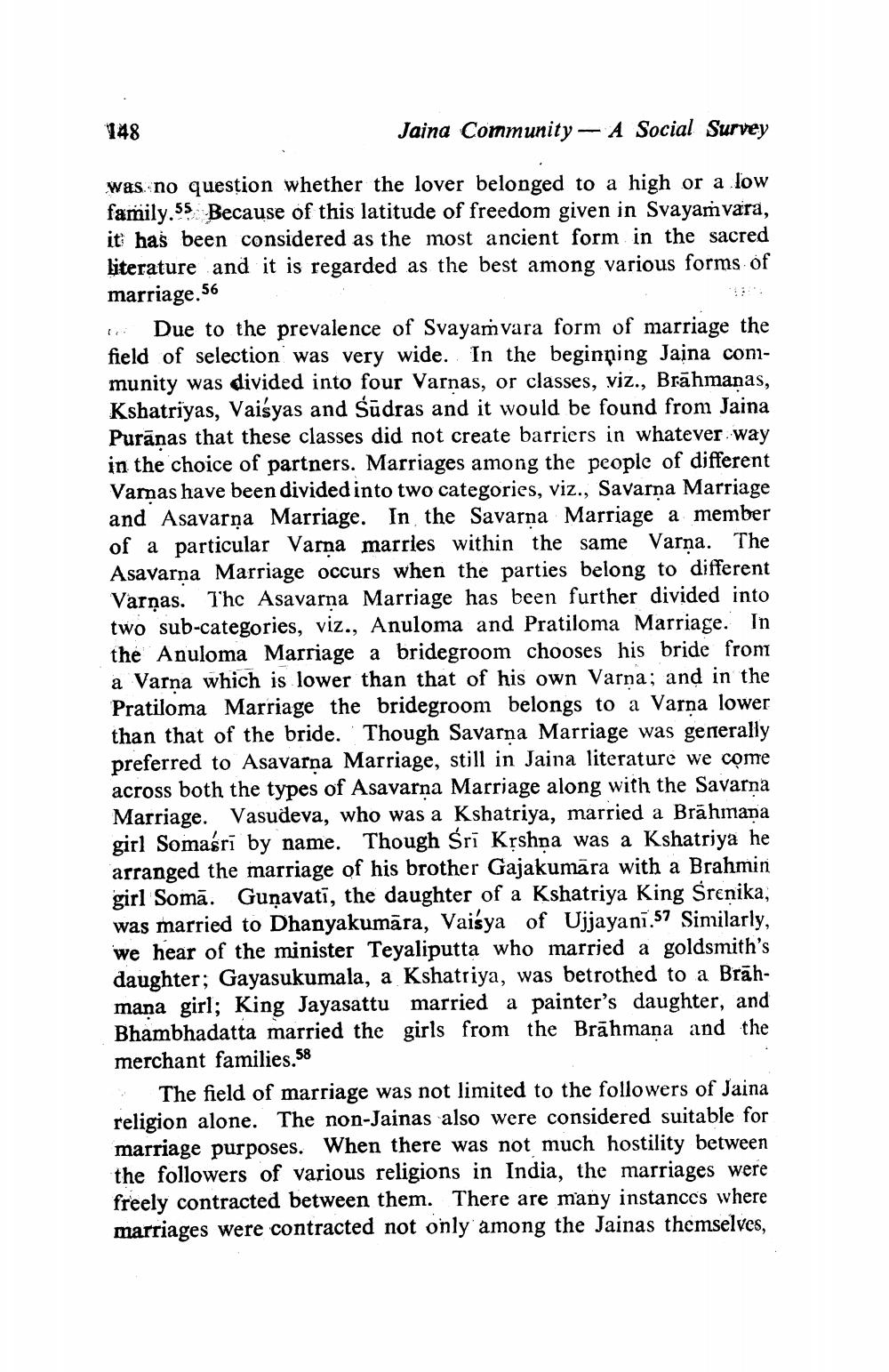________________
148
Jaina Community- A Social Survey
-
was no question whether the lover belonged to a high or a low family.55 Because of this latitude of freedom given in Svayamvara, it has been considered as the most ancient form in the sacred literature and it is regarded as the best among various forms of marriage.56
te
Due to the prevalence of Svayamvara form of marriage the field of selection was very wide. In the beginning Jaina community was divided into four Varnas, or classes, viz., Brahmanas, Kshatriyas, Vaisyas and Śūdras and it would be found from Jaina Purāņas that these classes did not create barriers in whatever way in the choice of partners. Marriages among the people of different Varnas have been divided into two categories, viz., Savarna Marriage and Asavarna Marriage. In the Savarna Marriage a member of a particular Varna marries within the same Varna. The Asavarna Marriage occurs when the parties belong to different Varnas. The Asavarna Marriage has been further divided into two sub-categories, viz., Anuloma and Pratiloma Marriage. In the Anuloma Marriage a bridegroom chooses his bride from a Varna which is lower than that of his own Varna; and in the Pratiloma Marriage the bridegroom belongs to a Varna lower than that of the bride. Though Savarna Marriage was generally preferred to Asavarna Marriage, still in Jaina literature we come across both the types of Asavarna Marriage along with the Savarna Marriage. Vasudeva, who was a Kshatriya, married a Brahmana girl Somasri by name. Though Sri Krshna was a Kshatriya he arranged the marriage of his brother Gajakumara with a Brahmin girl Somā. Gunavati, the daughter of a Kshatriya King Śrenika, was married to Dhanyakumāra, Vaisya of Ujjayani.57 Similarly, we hear of the minister Teyaliputta who married a goldsmith's daughter; Gayasukumala, a Kshatriya, was betrothed to a Brahmana girl; King Jayasattu married a painter's daughter, and Bhambhadatta married the girls from the Brahmana and the merchant families.58
The field of marriage was not limited to the followers of Jaina religion alone. The non-Jainas also were considered suitable for marriage purposes. When there was not much hostility between the followers of various religions in India, the marriages were freely contracted between them. There are many instances where marriages were contracted not only among the Jainas themselves,




